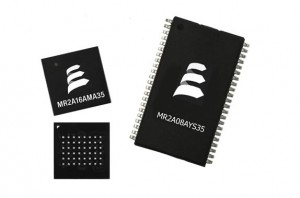NEC says that using their MRAM-based magnetic flip flop can help make low power standby mode
 There's an interesting article at Tech-On, by NEC, on their MRAM-based magnetic flip flip (MFF). NEC say that using such flip-flops can make low power 'standby' mode for appliances (TVs, computers, portable devices...).
There's an interesting article at Tech-On, by NEC, on their MRAM-based magnetic flip flip (MFF). NEC say that using such flip-flops can make low power 'standby' mode for appliances (TVs, computers, portable devices...).
Today, for example, LCD TVs have two kinds of standby - "fast standby" which consumes as much as 15W, and 'slow standby' that may consume as low as 0.1W, but may take a few seconds to show a picture when powered back on. The MFF might make it possible to design a stand-by mode that is both fast to power on, and uses minimal power.


